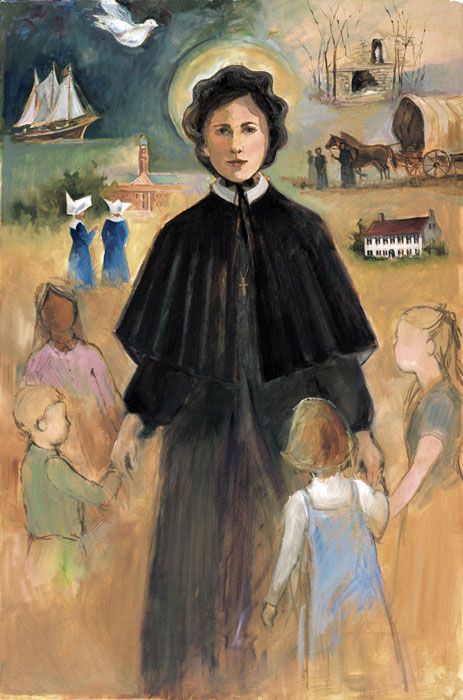St. Elizabeth Ann Seton
St. Elizabeth Ann Seton
This wife, mother and foundress of a religious congregation was born Elizabeth Ann Bayley on August 28, 1774 in New York City, the daughter of an eminent physician and professor at what is now Columbia University. Brought up as an Episcopalian, she received an excellent education, and from her early years she manifested an unusual concern for the poor.

In 1794 Elizabeth married William Seton, with whom she had five children. The loss of their fortune so affected William’s health that in 1803 Elizabeth and William went to stay with Catholic friends at Livorno, Italy. William died six weeks after their arrival, and when Elizabeth returned to New York City some six months later, she was already a convinced Catholic. She met with stern opposition from her Episcopalian friends but was received into full communion with the Catholic Church on March 4, 1805.
Abandoned by her friends and relatives, Elizabeth was invited by the superior of the Sulpicians in Baltimore to found a school for girls in that city. The school prospered, and eventually the Sulpician superior, with the approval of Bishop Carroll, gave Elizabeth and her assistants a rule of life. They were also permitted to make religious profession and to wear a religious habit.

In 1809 Elizabeth moved her young community to Emmitsburg, Maryland, where she adopted as a rule of life an adaptation of the rule observed by the Sisters of Charity, founded by St. Vincent de Paul. Although she did not neglect the ministry to the poor, and especially to Negroes, she actually laid the foundation for what became the American parochial school system. She trained teachers and prepared textbooks for use in the schools; she also opened orphanages in Philadelphia and New York City.
She died at Emmitsburg on January 4, 1821, was beatified by Pope John XXIII in 1963, and was canonized by Pope Paul VI in 1975.
Excerpted from Saints of the Roman Calendar by Enzo Lodi